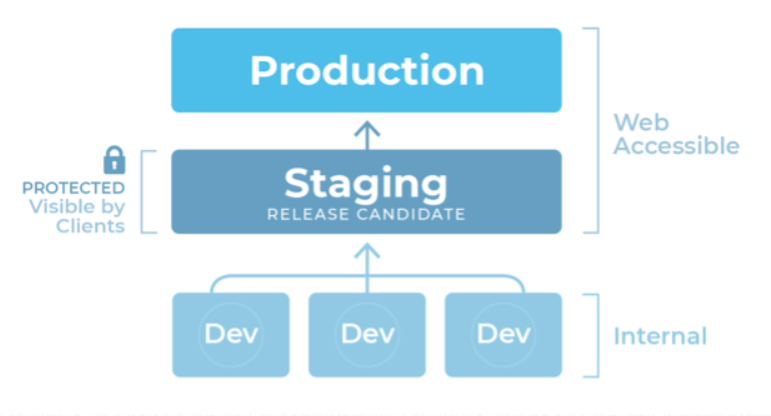Staging Environment
What is a Staging Environment?
Definition:
Staffing agency automation refers to the utilization of technology and automated processes to enhance the recruitment, placement, and management of personnel within an organization. This automation streamlines various aspects of the staffing process, from candidate sourcing and screening to onboarding, allowing businesses to efficiently manage their workforce needs.
Analogy:
Think of staffing agency automation as a highly efficient talent concierge. Similar to a concierge managing diverse guest requirements in a hotel, staffing agency automation handles tasks such as candidate sourcing, skill assessments, and placement, ensuring a seamless and effective recruitment experience for businesses.
Further Description:
Staffing agency automation encompasses a range of activities throughout the staffing lifecycle, including:
Candidate Sourcing and Screening: Automating the process of identifying and evaluating potential candidates based on predefined criteria, ensuring a more efficient and targeted recruitment process.
Onboarding and Compliance: Streamlining the onboarding process for new hires, including paperwork, training, and compliance checks, to expedite the integration of employees into the workforce.
Skills Assessment and Matching: Utilizing automated tools to assess the skills and qualifications of candidates, matching them to the specific requirements of job roles.
Time and Attendance Tracking: Automating time and attendance monitoring to accurately track work hours, facilitating payroll processes and compliance with labor regulations.
Communication and Collaboration: Implementing automated communication systems to facilitate collaboration between staffing agencies, clients, and candidates, ensuring smooth information flow.
Why is Staffing Agency Automation Important?
Efficiency and Timeliness: Automation accelerates the staffing process, enabling quicker identification and placement of qualified candidates, leading to faster fulfillment of workforce needs.
Quality of Hire: By automating candidate screening and skills assessments, staffing agencies can enhance the quality of hires, ensuring that candidates are better matched to job requirements.
Compliance and Accuracy: Automation helps in ensuring compliance with regulations by automating tasks related to background checks, onboarding documentation, and other legal requirements, reducing the risk of errors.
Cost Savings: Through the automation of repetitive tasks, staffing agencies can optimize their resources, reduce manual workload, and decrease operational costs associated with recruitment.
Scalability: Staffing agency automation enables agencies to scale their operations efficiently, handling a larger volume of placements without a proportional increase in manual effort.
Examples and Usage:
Applicant Tracking Systems (ATS): These systems automate the recruitment process, from posting job openings to managing candidate applications and facilitating communication between recruiters and applicants.
Automated Interviewing Platforms: Using AI-powered tools for initial candidate interviews, streamlining the screening process and providing valuable insights for recruiters.
Employee Onboarding Software: Automation tools for onboarding processes, including document completion, training modules, and integration with HR systems.
Key Takeaways:
- Staffing agency automation involves leveraging technology to automate various aspects of the recruitment and workforce management process.
- It includes candidate sourcing, screening, onboarding, skills assessment, and compliance within the staffing lifecycle.
- Benefits include increased efficiency, quality of hire, compliance, cost savings, and scalability.
- 4. Examples of staffing agency automation tools include Applicant Tracking Systems (ATS), automated interviewing platforms, and employee onboarding software.





